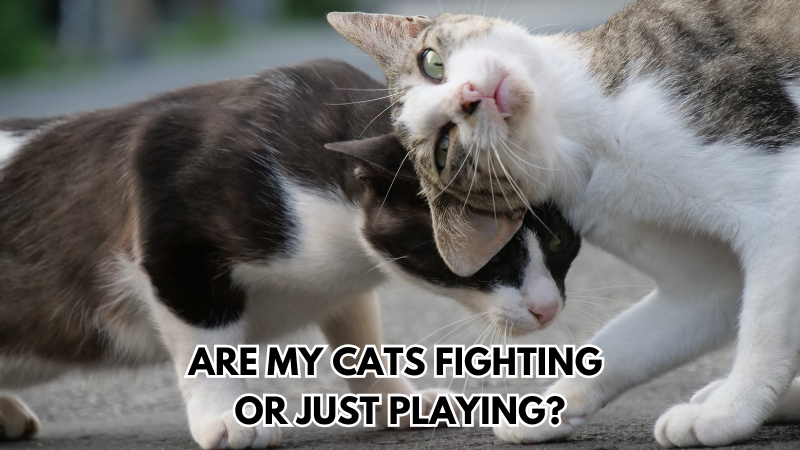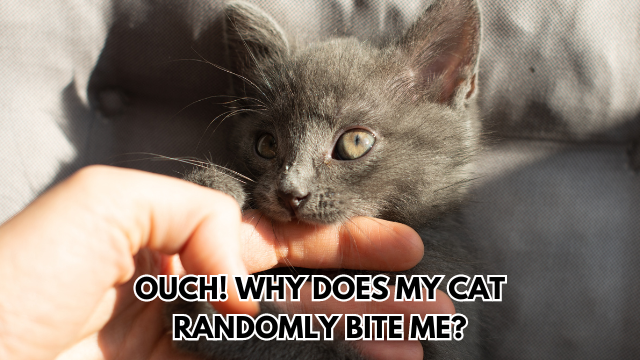Did you know that cats have been known to hold grudges for up to 16 hours after a cat fight ? While this fact may surprise some, it emphasizes just how intense and emotional cat fight can be.
Whether it’s two cats in the same household or a sudden encounter between neighborhood felines, breaking up a cat fight can be a stressful and potentially dangerous situation for everyone involved.
But how do you safely break up a cat fight without getting hurt or making things worse?
In this article, we’ll explore why cats fight, how to recognize the warning signs, and most importantly, how to safely intervene when tensions escalate.
With practical tips and advice from experts, you’ll be well-equipped to manage a cat fight without turning it into a bigger problem.
- Why Do Cats Fight ?
- Signs of an Impending Cat Fight
- Ways to Safely Break Up a Cat Fight
- What to Do After the Cat Fight
- Preventing Cat Fight in the Future
- Bonus Tip
Why Do Cats Fight ?
Understanding why cats fight is the first step in preventing conflicts. There are a few common reasons why cats might get into a scuffle:
- Territorial Disputes: Cats are territorial by nature. According to PetMD, even indoor cats can be extremely protective of their space. When a new cat enters their domain, or if outdoor cats cross paths, tensions can rise quickly.
- Resource Guarding: Cats may fight over food, litter boxes, or favorite resting spots. This is particularly common in multi-cat households where resources may be perceived as limited.
- Social Hierarchies: Cats, especially those living in groups, establish a hierarchy. Sometimes, they may fight to assert dominance or challenge another cat’s position in the social order.
- Fear or Stress: Cats that feel scared or stressed might lash out at other animals. This can happen during loud noises, changes in their environment, or unfamiliar visitors.
Recognizing the Signs of an Impending Cat Fight
Before a fight breaks out, cats usually give clear warning signs. Learning to recognize these signals can help you intervene before things escalate. According to ASPCA, some common signs include:
- Growling or Hissing: These vocalizations indicate discomfort and a desire for the other cat to back off.
- Stiff Posture: Cats about to fight often puff up their fur, arch their back, and appear larger than usual.
- Staring and Tail Flicking: A hard stare and rapidly flicking tail can be signs of frustration and aggression.
- Ears Pinned Back: When a cat’s ears are flat against their head, it usually means they’re feeling threatened and ready to attack.
If you spot these signs, it’s a good idea to prepare to intervene, as a fight may be imminent.

How to Safely Break Up a Cat Fight
Breaking up a cat fight requires caution. Cats in the middle of a fight are highly agitated and might redirect their aggression toward you. Never use your hands or body to separate fighting cats, as this can result in serious injury. Here’s what you should do instead:
1. Make a Loud Noise
One of the safest and quickest ways to disrupt a cat fight is by making a sudden, loud noise.
Clapping your hands, banging two objects together, or blowing a whistle can startle the cats and cause them to separate. According to Cat Behavior Associates, noise is an effective tool because it distracts the cats without putting you in harm’s way.
2. Use a Barrier
If the cats don’t respond to noise, try placing a physical barrier between them.
A large piece of cardboard, a pillow, or even a thick blanket can work. Gently insert the barrier between the cats to block their view of each other. This can help diffuse the fight without risking injury to yourself.
3. Distract with Water or a Safe Object
Spraying water from a squirt bottle can be an effective way to break up a fight. Cats typically dislike water, and a light spray is enough to make them back off.
Another option is to toss a soft object, like a toy or pillow, near the fighting cats. The goal is not to hit them, but to redirect their attention long enough for the fight to end.
4. Separate Them Safely
Once the fight has stopped, it’s important to separate the cats and give them space to cool off.
If you can, herd one cat into a different room or area of the house. If the fight happened outdoors, try to guide the cats away from each other.
Allowing them to calm down before reintroducing them is key to avoiding another confrontation.
What to Do After the Cat Fight
Once the fight is over, you’ll need to assess the situation. Even if the fight seemed minor, check both cats for any injuries. Cat bites can lead to infections, so it’s important to clean any wounds and seek veterinary care if necessary.
1. Give Them Time to Calm Down
Cats take time to settle after a fight. Keep them in separate areas for at least a few hours or even a day.
Watch for signs of lingering tension, like growling or hissing, before reintroducing them.
2. Address the Underlying Cause
If your cats have fought, it’s important to figure out what caused the conflict.
Was it a territorial dispute? Were they competing for resources?
Understanding the trigger can help prevent future fights. According to The Humane Society, providing plenty of resources—like multiple litter boxes, food dishes, and resting spots—can reduce competition and lower the chances of fighting.
3. Monitor Their Behavior
After a fight, monitor your cats’ behavior closely.
If one or both cats continue to show aggression or if they fight again, consult with a veterinarian or animal behaviorist.
Ongoing aggression may require behavioral interventions or environmental changes to keep the peace.

Preventing Cat Fight in the Future
The best way to deal with cat fights is to prevent them from happening in the first place. Here are a few tips to reduce the likelihood of fights:
- Provide enough resources: Ensure each cat has their own food and water dishes, litter boxes, and resting areas. This minimizes competition and territorial disputes.
- Use pheromone diffusers: Products like Feliway release calming pheromones that can help reduce stress and tension between cats.
- Gradually introduce new cats: If you’re bringing a new cat into the household, take your time with introductions. According to Best Friends Animal Society, slow introductions over the course of several days or weeks can help prevent fights.
- Play with your cats regularly: Engaging your cats in play can help reduce pent-up energy and stress, making them less likely to fight.
Bonus Tip: Stay Calm!
Cats are highly intuitive and can pick up on your emotions. If you remain calm during a cat fight, it can help prevent the situation from escalating.
Avoid yelling or panicking, as this might heighten the cats’ stress.
Take a deep breath and follow the steps to safely break up the fight without making things worse.
Read: How to Tell Your Cat ‘I Love You’ ? 10 Ways Explained
Breaking up a cat fight is never a pleasant experience, but with the right approach, you can safely manage the situation.
By staying calm, using distraction techniques, and separating the cats, you’ll minimize the risk of injury and help restore peace.
Remember, understanding the root cause of the fight and making changes to the environment can go a long way in preventing future conflicts.***
Watch Videos about Cat & Kitten Care on Youtube @naowthecat